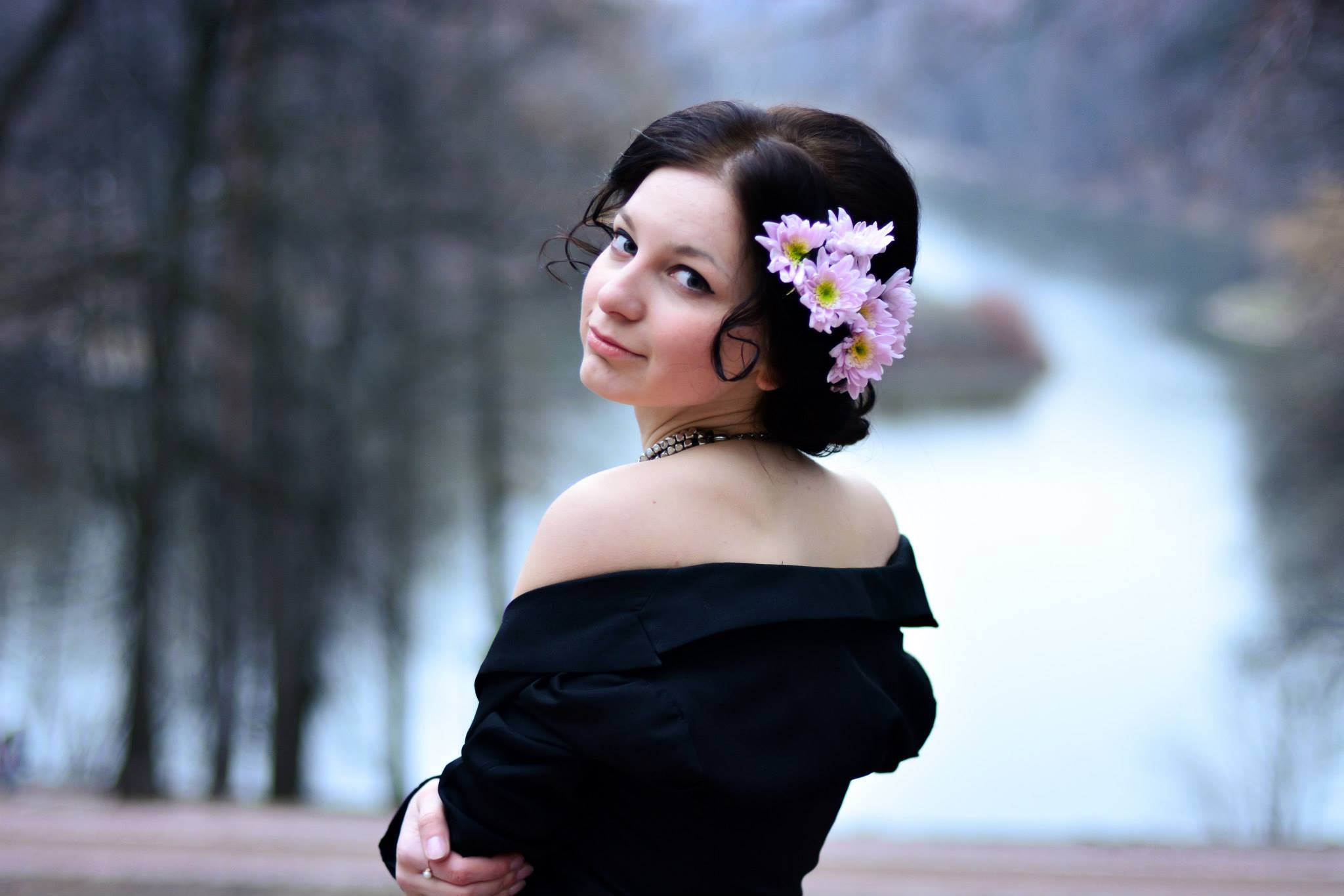Controsterzo a fagotto – Wrapping a countersteering up
Per il pittore Kandinsky, il viola deriva dal rosso che tenda al blu. Là, s’avrebbe una “passionalità” in via di “raffreddamento”. Il viola sarebbe abbastanza instabile da percepire. Esso andrà perdendo la sua vitalità. Soprattutto per i cinesi, il viola può simboleggiare un lutto. Kandinsky lo associava in sinestesia col suono del fagotto, nel contempo grave e che si lasciasse andare. Sui capelli di Natalya, ci sarebbe un grande fermaglio a fiori. Lei sorride, simpaticamente “raffreddando” la propria passionalità. Il tono lilla dei fiori conferisce più dolcezza a quello grigio-blu di sfondo. In basso, noi percepiamo quanto la schiena s’infagotti. Lì, la “gravità” del tono nero si lascerà andare… solo fra il “controsterzo” d’un grande fermaglio. Basta che percepiamo la schiena “infagottata”, che rimetta pesantemente “in carreggiata” la rotazione del volto.
According to painter Kandinsky, the violet comes from the red that tends to the blue. There a “passionateness” in “cooling down” period would happen. The violet would be quite unstable to be perceived. It will go to lose its vitality. Principally for Chinese the violet can symbolize a grief. Kandinsky related it in synesthesia to the sound of a bassoon, in the same time bass and abandoned to itself. In Natalya’s hair, a large hairpin with flowers would appear. She smiles, nicely “cooling down” her passionateness. The lilac tone of flowers gives more sweetness to the grey-blue tone on the background. Down, we perceive how the back wraps up itself. There, the “gravitas” of a black tone will be abandoned to itself… only between the “countersteering” of a large hairpin. It’s enough that we perceive the “wrapped up” back, from which the rotation of face heavily is back “on the carriageway”.
Bibliografia consultata – Annotated bibliography:
W. KANDINSKY, Lo spirituale nell’arte, SE, Milano 2005, p. 71
Nota biografica sugli artisti recensiti – Biographical sketch about the two artists:
La modella Natalya Polkovnikova nasce a Kotlas (Russia) nel 1992. Da cinque anni, lei però vive a Mosca. Natalya è laureata in Storia; ora sta frequentando un master in Direzione per l’Ospitalità ed il Turismo. Lei inoltre lavora da assistente di ricerche, presso il Dipartimento di Storia nella propria Università. A Natalya interessano il fashion, i libri, lo sport, le lingue straniere.
The model Natalya Polkovnikova was born in Kotlas (Russia) in 1992. However, since five years she lives in Moscow. Natalya has the degree in History; now she is attending a master about Management in Hospitality and Tourism. She also works as research assistant, at the Department of History in her University. Natalya is interested in fashion, books, sport, foreign languages.
Il fotografo russo Egor Egorov nasce nel 1993. Egli vive e lavora a Mosca. Egor scatta per fermare i ricordi più importanti delle persone (le vacanze, i viaggi, i matrimoni, le feste ecc…). Qualcosa che egli “abbellirà” al meglio, anche ricorrendo alla postproduzione.
The Russian photographer Egor Egorov was born in 1993. He lives and works in Moscow. Egor shoots to stop the most important memories of people (the holidays, the travels, the weddings, the parties etc…). Something that he will “beautify” in the better way, also using the postproduction.
www.eaphoto.net


+ Non ci sono commenti
Aggiungi